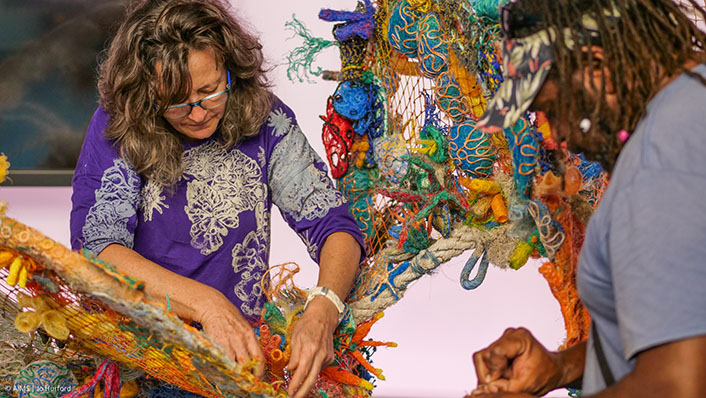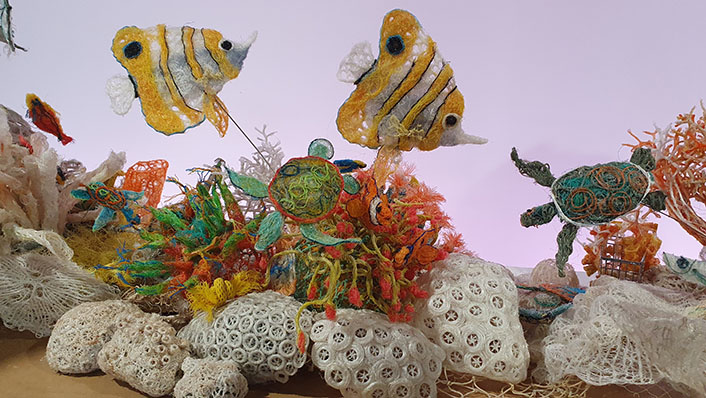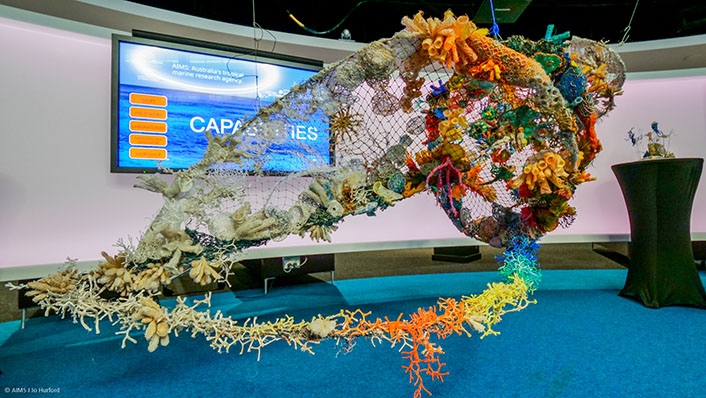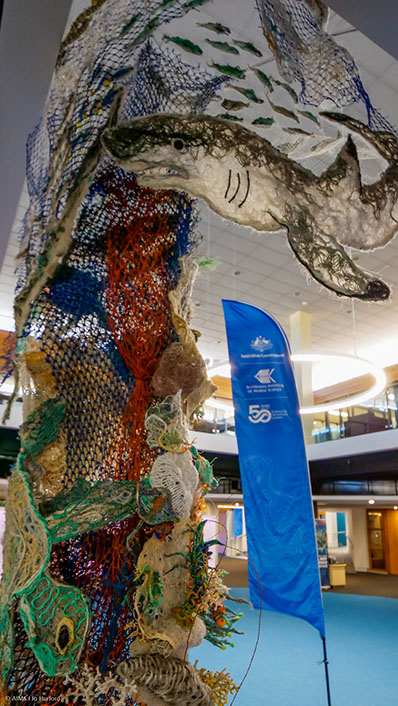In a mix of sea, science, and artistic collaboration, AIMS staff celebrated the Institute’s 50 years by creating a large art installation using ghost nets. Ghost nets are discarded fishing gear that pose a danger to marine life as they drift on ocean currents or snag on coral reefs.
Staff in Townsville worked with artists from the and from the Torres Strait to stitch and weave the fibres into sponges, corals, fish and other marine life to build art pieces that reflect AIMS science and ocean issues.
Staff in Perth and Darwin sewed their way into the artwork remotely by following instructions provided in kits. Community and schools also contributed through workshops in Darwin and across north Queensland.

Project leader and manager of Indigenous Partnerships at AIMS, said the work was a “fantastic way” to celebrate during .
“The natural synergy between art and science provides an ideal platform for bringing western science together with Traditional knowledge and perspectives – something which lies at the core of our program at AIMS,” she said.
The Ghost Net Collective founder Lynette Griffiths said the Collective was created to be able to educate and collaborate more widely with people cross-culturally and across the world.
“We needed to be able to link that science of the nets and the science of plastics with the science of the ocean. We were able to bring that together.”
The ghost nets used in this project were collected on a Cape York beach clean-up. The artists Lynette Griffiths, Marion Gaemers, Jimmy J Thaiday, Lavinia Ketchell and Diann Lui enjoyed a two-week residency at our headquarters in Townsville.

“The residency was a great insight into Indigenous career pathways,” said Erub Arts Manager, Diann Lui.
“During our time there, we were able to tour the ³Ô¹ÏÍøÕ¾ Sea Simulator where AIMS is conducting research into the effects of climate change on the reef.”
The largest of the art pieces was inspired by the giant triton shell – an animal currently investigated by AIMS scientists due to its ability to frighten and eat coral-eating starfish. For the artists, the spiral shell is about the spiral of life and the journey of life to death. The Collective team were “enamoured with the speed the triton can consume crown-of-thorns”, which consumes corals and devastates reef communities.
In parallel with the artwork, Sally Donald from the Ghost Net Collective collated an education package that aligns with the ³Ô¹ÏÍøÕ¾ Science and Art Curriculum and is for students from the first year of schooling through to year 10.
“As well as the art we’ve been able to create, we also contributed to an educational resource for the next generation of scientists. The resources are designed for teachers to deliver content leaning on resources that we have at AIMS,” said Libby.
The final art pieces were unveiled at the AIMS Marine Science Symposium in July and will be displayed for the remainder of this year at AIMS sites in Townsville, Darwin and Perth.
The project involved the , , the and AIMS.



Feature Image: AIMS staff and Marion Gaemers from Ghost Net Collective work on the triton-inspired art installation. Image: Heidi Luter








